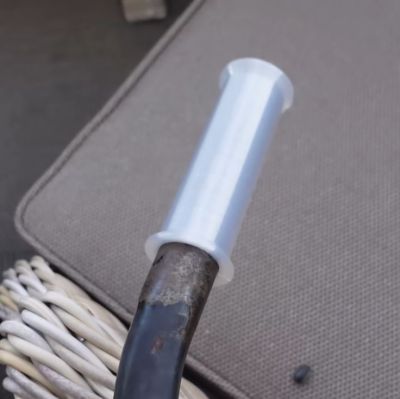Another entry in the world of interesting FDM filaments comes courtesy of CC3D with their 72D TPU filament, with [Dr. Igor Gaspar] putting it to the test in his recent video. The use of the Shore hardness D scale rather than the typical A scale is a strong indication that something is different about this TPU. The manufacturer claims ‘nylon-like’ performance, which should give this TPU filament much more hardness and resistance to abrasion. The questions are whether this filament lives up to these promises, and whether it is at all fun to print with.

TPU is of course highly hydrophilic, so keeping the filament away from moisture is essential. Printing temperature is listed on the spool as 225 – 245°C, and the filament is very bendable but not stretchable. For the testing a Bambu Lab X-1 Carbon was used, with the filament directly loaded from the filament dryer. After an overnight print session resulted in spaghetti due to warping, it was found that generic TPU settings at 240ºC with some more nylon-specific tweaks seemed to give the best results, with other FDM printers also working well that way.
The comparison was against Bambu Lab’s 68D TPU for AMS. Most noticeable is that the 72D TPU easily suffers permanent deformation, while being much more wear resistant than e.g. PLA. That said, it does indeed seem to perform more like polyamide filaments, making it perhaps an interesting alternative there. Although there’s some confusion about whether this TPU filament has polyamide added to it, it seems to be pure TPU, just like the Bambu Lab 68D filament.















I was thinking about this… TPU has great layer adhesion, but usual filaments are too soft. So i was really interrested to find out if harder TPUs would provide the same toughness without being flexible (which makes it unusable for most machine parts).
I’ve been testing automotive chassis bushings in 64D and been pretty impressed, its equivalent with the Poly bushings sold by race shops.
What filaments are you using for that? I was thinking of doing the same but am worried about heat creep with most of the TPUs I’ve seen having a fairly low heat deflection
i’m interested in filaments with more flex and ‘toughness’, but i don’t have a project in mind off the top of my head. and the local bike shop sells perfectly fine mountain bike handlebar grips for about $10. not sure how tpu stacks up to the rubber but i’m gonna guess i prefer the rubber.
so i guess – thanks! – i am taking this article as yet another example of why i don’t really need tpu :)
TPU works extremely well for parts that will see abuse. Ideally, for grips you’d use a foaming TPU which can produce very soft and grippy parts at higher temps (costlier), or a low hardness TPU (difficult to print). But even a normal 90A TPU makes great grips when printed with a textured surface and low infill.
Can you please let us know what the extra nylon specific tweaks that you used were?? I’m having real issues with bed adhesion with this!
I’ve made several test prints with the CC3D 72D TPU filament and my feelings are a bit mixed.
If you print it right the layer adhesion is very good.
But it’s very easy to mess the settings up. It seems if the previous layer is to cold then it will stick very poorly, much worse then PLA.
I find it very difficult to find the right settings for temperature, fan speed and other slicer settings (speed), that influence the temperature / cooling.
In my test i had the problem that 100% infill regions printed too hot and sparse infill regions too cold.
This lead to either one region didn’t stick or the other region showing rough / wavy walls. Didn’t manage to get both right at the same time.
I have to add that i didn’t print from a dryer, so moisture may also had an effect.
The temperatures of the filaments touching is obviously not only determined by the temperature it leaves the nozzle but also how many time was there for the other side (previous layer) to cool down, geometry of the print, etc.
Current slicers are very bad at predicting that, or they don’t do that at all.
It would need some kind of thermal prediction / simulation similar to in the fooling link:
https://www.aon3d.com/press/machine-learning-driven-thermal-optimization/
You should print from a dryer.